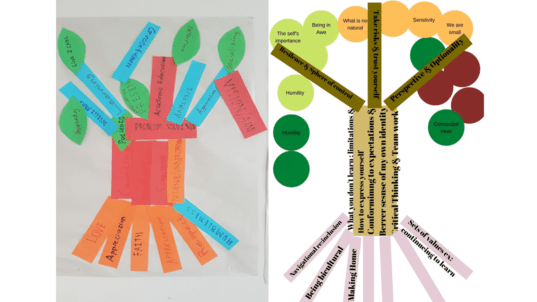IF’s public discussions routinely begin with an exploration of the concerns relating to the topic at hand. Discussants then move on to explore various conceptual possibilities for addressing those concerns.
There are various schools of thought among IF facilitators about which kind or type of conceptual possibility might serve as the most useful starting point for these explorations. Some think it’s best to start with the most provocative possibility, in order to get participants engaged in the discussion. Another view is that it’s wise to begin with the first possibility listed in the IF discussion Report, since those who produced it carefully considered which should come first. Still another approach is to open up the discussion with a “gateway” possibility, i.e. one that quickly attunes participants to the fullest range of conceptual questions at issue in the Report. A final tack might best to “follow your group” and begin with whatever they seem most interested in–or whatever might most challenge them.
Personally, while I think these is some wisdom in all of these suggestions, I also think it’s far more important to start slowly than to get the starting point right. And by that I mean pausing to review the short versions of all of the possibilities in the Report before discussing any one in depth. I think there’s a lot to be gained by spending a few minutes having discussants take a careful look at the forest before they start exploring individual trees. Here are some of the specific benefits–in ascending order of importance–that result from pausing for a comprehensive, if brief, look at the full range of possibilities in an IF Report before discussing individual possibilities:
- greater appreciation for and attention to the content of the Report
- enhanced grasp of the nature and degree of contrast among and between the possibilities in the Report
- greater openness to interactivity between conceptual possibilities (whether actually represented in the Report or not)
- dampening of the (natural) tendency to “vote” on individual possibilities as they’re discussed
- muting of advocacy, debate, argument
- setting the stage for an exploratory approach to discussion (by reminding discussants that there are multiple possibilities)
Given all of these advantages, and the small time investment required to achieve them, my advice would be have public discussion participants look first at the forest, then at the individual trees.



